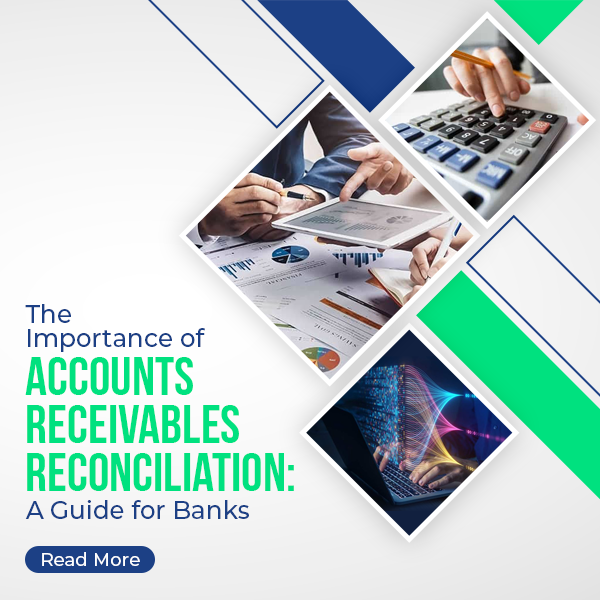Banks frequently have to navigate a plethora of transactions, invoices, and payments in the complex world of financial administration. The importance of accounts receivable reconciliation in the middle of this complexity cannot be overemphasized. This procedure is essential to a bank’s general well-being and long-term viability because it guarantees the correctness of financial records.
Understanding Accounts Receivables Reconciliation
Accounts receivable reconciliation is a critical financial practice that ensures the accuracy and reliability of a company’s financial statements. The reconciliation process involves cross-referencing the detailed records of individual customer transactions with the aggregated balances reported in the company’s general ledger. This meticulous comparison helps identify any discrepancies, such as missing payments, billing errors, or unrecorded transactions.
Finding and fixing inconsistencies as soon as possible is one of the main goals of accounts receivable reconciliation. This proactive strategy is crucial for preserving the company’s financial stability and building client trust. Promptly detecting and addressing disparities can avert the build-up of non-performing loans and enhance overall cash flow management.
In Addition, the reconciliation of accounts receivable offers important information about how well the business manages its credit and collection procedures. Businesses can determine the typical time it takes for consumers to pay their invoices by examining the ageing of their receivables. Making educated judgments on credit rules, establishing credit limits, and putting methods in place to quicken cash collections all depend on this information.
Why Does It Matter?
1. Transparency and Financial Accuracy
Accurate financial reporting is essential to every successful firm. Making sure the amounts on your books correctly represent the money you are owed is ensured by reconciling accounts receivable. This is vital for external parties like lenders and investors, as well as for internal stakeholders who need transparency.
2. Effective Cash Flow Management
Cash flow is the lifeblood of any business. You can predict and handle any gaps by tracking and managing the timing of cash inflows with the aid of reconciliation. Early detection of past-due payments gives you the ability to move quickly, preserving a positive cash flow and averting liquidity problems.
3. Reducing the Risk of Debts
The possibility of debts that may never be repaid, is one of the biggest obstacles that organizations must overcome. Frequent reconciliation assists in identifying past-due accounts at an early stage, enabling proactive steps to be taken to recover money or modify financial plans to lessen the impact of any losses.
4. Building Stronger Customer Relationships
Reconciliation that is efficient takes relationships into account in addition to numbers. Organizations demonstrate reliability and professionalism by promptly resolving difficulties related to invoices or payments.
As a result, client relationships are strengthened, and trust is fostered.
Best Practices for Accounts Receivables Reconciliation
1. Timely and Frequent Reconciliation
Include reconciliation regularly in your accounting procedures. Frequent audits guarantee that any disparities are found and fixed quickly, preventing little problems from growing into significant financial inconsistencies.
2. Integrating Automated Reconciliation Software
Use technology to aid in the reconciliation process. Automation technologies lower the possibility of human error while simultaneously saving time. To improve the efficiency of the reconciliation process, think about putting technologies in place that can automate the matching of transactions.
3. To keep an eye on KPIs, or key performance indicators.
Determine and keep an eye on pertinent KPIs, such as ageing reports and days sales outstanding (DSO). You can identify patterns or areas that require improvement with the use of these metrics, which offer insights into the effectiveness of your accounts receivable process.
4. Interaction and Cooperation
Promote candid communication between the sales and finance departments. Understanding the state of customer accounts and resolving possible problems before they affect the bottom line requires cooperation. Fostering a transparent communication channel guarantees that all parties are in agreement about client dealings, unpaid invoices, and monetary obligations.
Key takeaway
Reconciling accounts receivable is a strategic necessity for companies hoping to succeed in the long run, not just a matter of financial hygiene. By upholding financial precision, efficiently handling cash flow, and reducing the likelihood of bad debt, enterprises can confidently traverse the intricate financial landscape. Accept reconciliation as a preventative step that will protect your financial well-being and fortify the groundwork for long-term success.
AutoRecon is a highly adaptable and scalable automated reconciliation software solution, and it operates in real-time, covering the entire organization from end to end. The transactional feed interfaces with any enterprise’s upstream system and is easily customizable for any business process.













